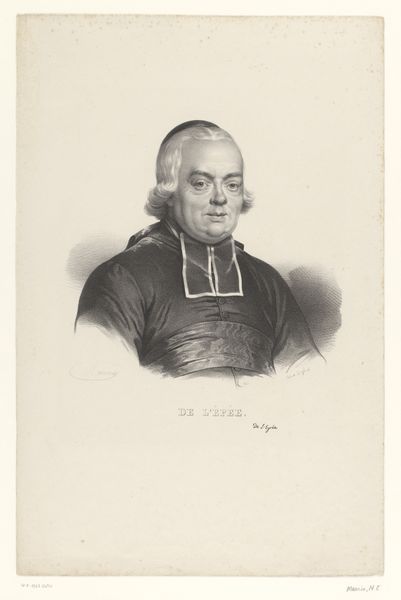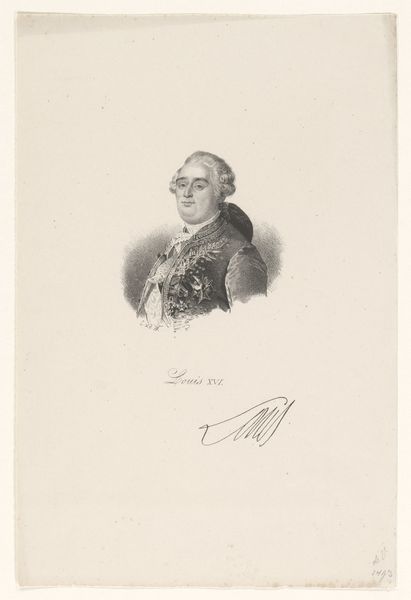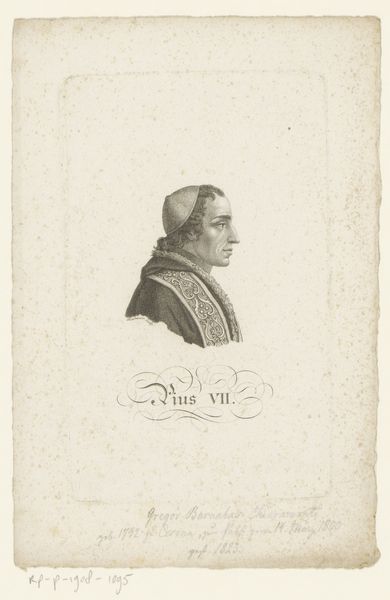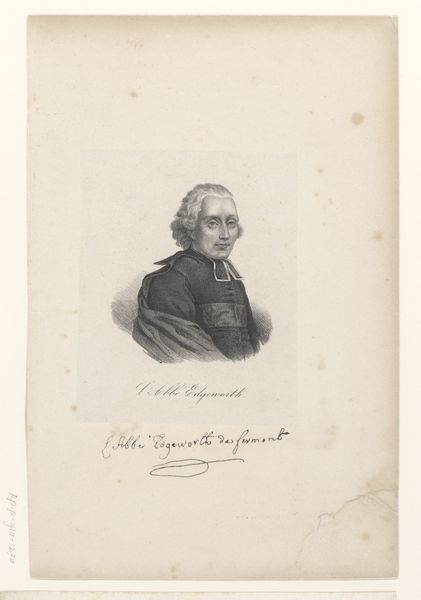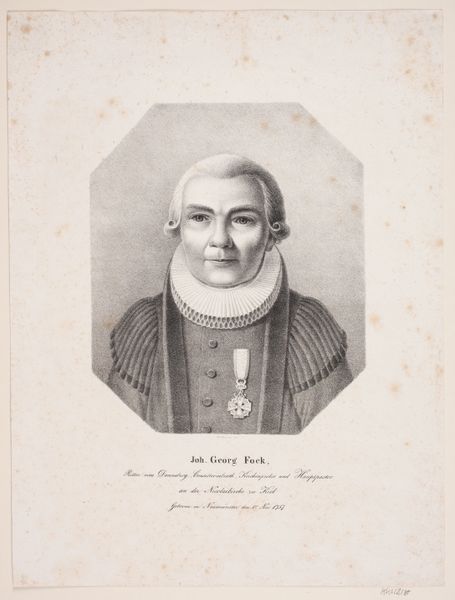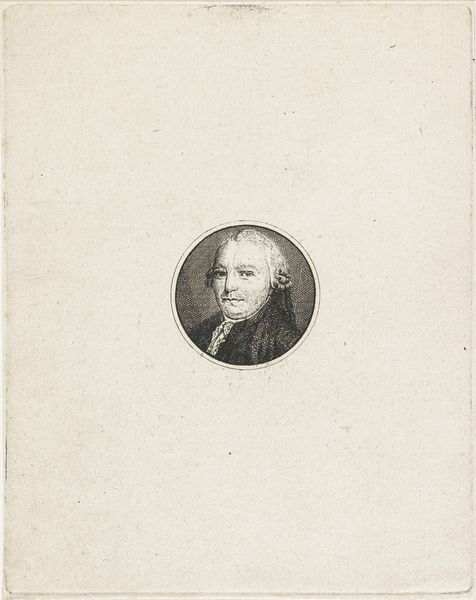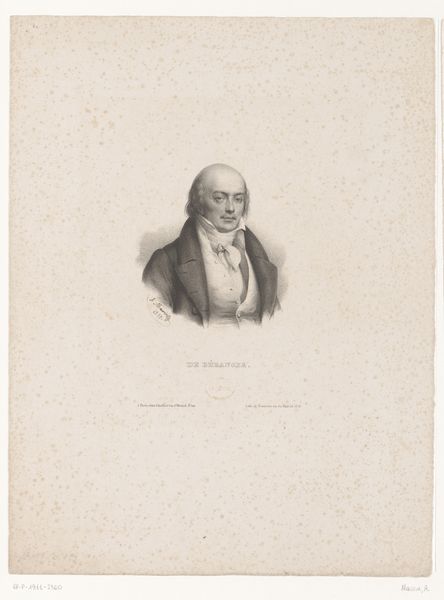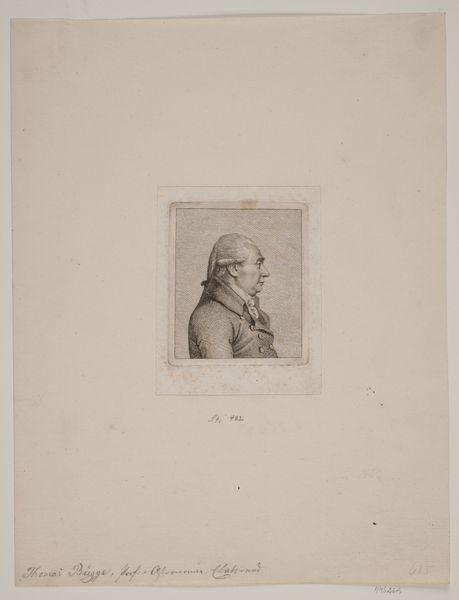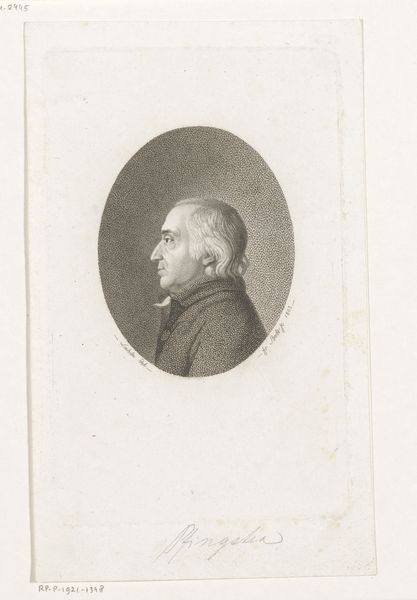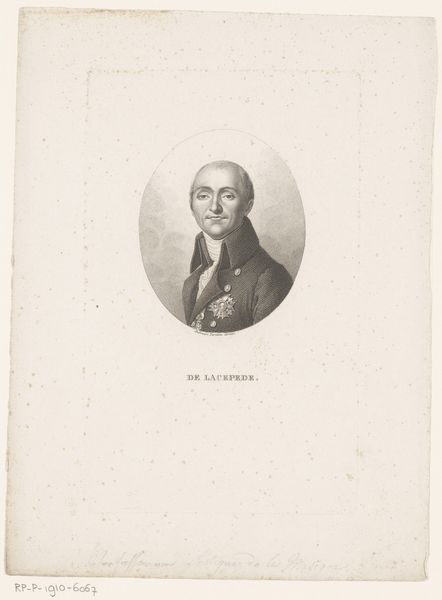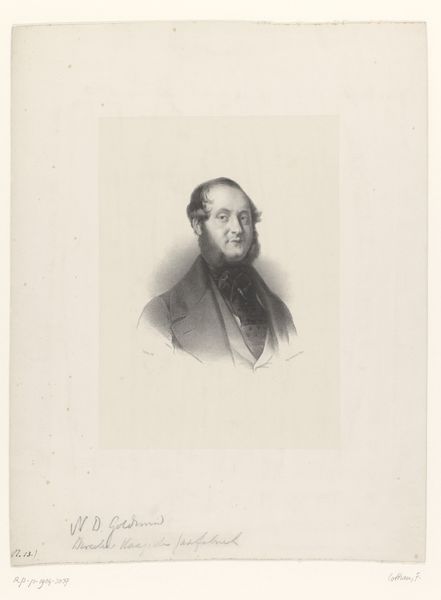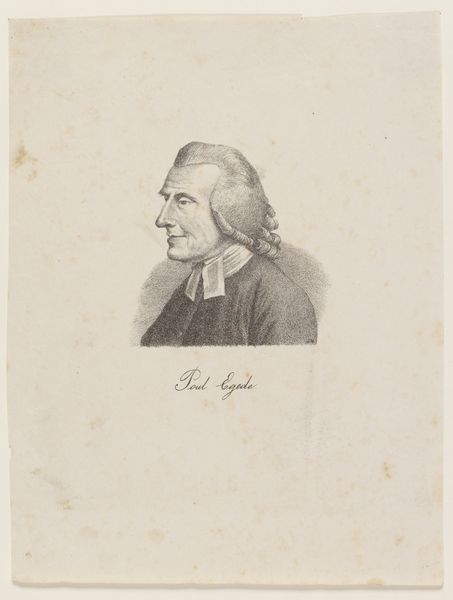
print, engraving
#
portrait
#
neoclacissism
# print
#
old engraving style
#
personal sketchbook
#
history-painting
#
academic-art
#
engraving
Dimensions: height 246 mm, width 158 mm
Copyright: Rijks Museum: Open Domain
Editor: So this engraving, “Portret van Charles-Michel de l'Epée,” likely made between 1825 and 1842 by Nicolas Maurin, really captures a sense of formal austerity. What strikes me is how the textures are rendered, the lines creating form and volume out of nothing, and all through such a mechanical reproduction process. What's your read on this? Curator: It’s precisely the 'mechanical reproduction' that interests me. Think about the socioeconomic implications of printmaking at this time. Engravings like this facilitated a wider dissemination of imagery than painting ever could. Consider also how the labour is divided. We see the named artist Maurin, but there was an entire workshop of skilled labourers enabling this portrait's production and distribution, democratising access to this clergyman's image. What does that shift do to power? Editor: That makes so much sense. So, instead of just thinking about the image of Charles-Michel de l'Epée, we should be considering the printmaking industry and its impact on spreading this image around. How does the 'neoclassical' label affect that perspective? Curator: The neoclassical style here is also part of that manufacturing process. Notice the clear lines, the emphasis on form and the lack of overt emotion. All that lends itself well to reproduction. It becomes almost a proto-industrial image; efficient, clear, repeatable, reflecting that era's shift towards standardized production. The medium shapes the message, quite literally. Editor: It is interesting to consider the labour that is involved, not just of the named artist, but also everyone that contributes to that production of art. It opens up new avenues for understanding the art world then, and perhaps even now. Curator: Exactly! And focusing on those material conditions can offer powerful insights into how art functions within broader social and economic systems.
Comments
No comments
Be the first to comment and join the conversation on the ultimate creative platform.
